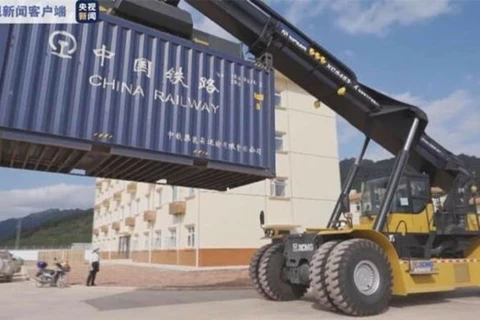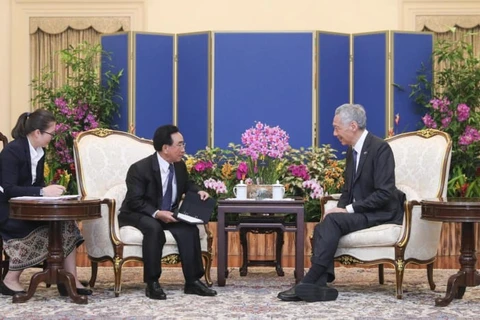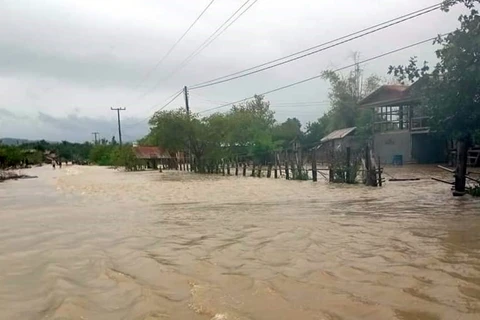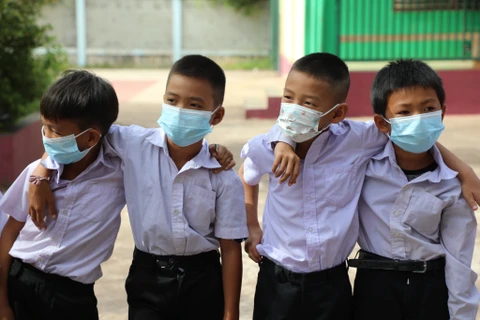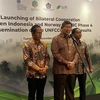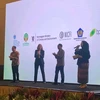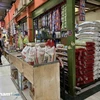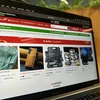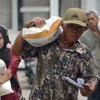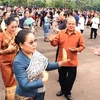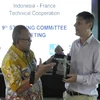Vientiane (VNA) – The Association of the Lao Garment Industry (ALGI) has encouraged every village to have at least one shop stocked with clothes produced locally, aiming to reduce the import of the products and controlling the inflation rate of the country.
ALGI President Xaybandith Raspone was quoted by local media as saying that Lao people should use Lao products, to replace imports. Curbing expenditure in foreign currencies is also important to prevent imported goods from being brought into the country illicitly and priced higher than necessary, he said.
He stated that the association hopes to see all garment factories in the country, regardless of their size, closely cooperate, coordinate, and together tackle the association’s problem.
ALGI also plans to increase the production of Champadaeng brand school uniforms to make them available at a low price so that parents can buy them instead of getting imported uniforms for their kids. Earlier the association’s factories did make the uniform locally, but only a few shops stocked them, resulting in few people buying the products.
The association now has 77 factories under its wing, 50 of which make goods for export and the other 27 produce garments for local consumption. There are 72 factories in Vientiane capital, two in Champasak, two in Savannakhet province and one in Vientiane Province.
About 25,000 people are employed by the factories, 90% of them women. These factories produce a variety of clothes, including uniforms, shirts, T-shirts, polo shirts, office wear, coats, jeans, blankets, shoes, and other items.
Laos exports 80% of its goods to Europe, 9% to Japan, 4% to the US, and 2% to Canada. Laos export goods worth roughly 200 million USD each year.
The Lao Garment Association suffered considerably during the COVID-19 pandemic which made them close many of their factories.
Shortage of workers also resulted in delay in the delivery of products. Xaybandith has urged the government to assist in successfully reopening all garment factories in the country that will promote the creation of both jobs and revenue in the sector./.
ALGI President Xaybandith Raspone was quoted by local media as saying that Lao people should use Lao products, to replace imports. Curbing expenditure in foreign currencies is also important to prevent imported goods from being brought into the country illicitly and priced higher than necessary, he said.
He stated that the association hopes to see all garment factories in the country, regardless of their size, closely cooperate, coordinate, and together tackle the association’s problem.
ALGI also plans to increase the production of Champadaeng brand school uniforms to make them available at a low price so that parents can buy them instead of getting imported uniforms for their kids. Earlier the association’s factories did make the uniform locally, but only a few shops stocked them, resulting in few people buying the products.
The association now has 77 factories under its wing, 50 of which make goods for export and the other 27 produce garments for local consumption. There are 72 factories in Vientiane capital, two in Champasak, two in Savannakhet province and one in Vientiane Province.
About 25,000 people are employed by the factories, 90% of them women. These factories produce a variety of clothes, including uniforms, shirts, T-shirts, polo shirts, office wear, coats, jeans, blankets, shoes, and other items.
Laos exports 80% of its goods to Europe, 9% to Japan, 4% to the US, and 2% to Canada. Laos export goods worth roughly 200 million USD each year.
The Lao Garment Association suffered considerably during the COVID-19 pandemic which made them close many of their factories.
Shortage of workers also resulted in delay in the delivery of products. Xaybandith has urged the government to assist in successfully reopening all garment factories in the country that will promote the creation of both jobs and revenue in the sector./.
VNA
